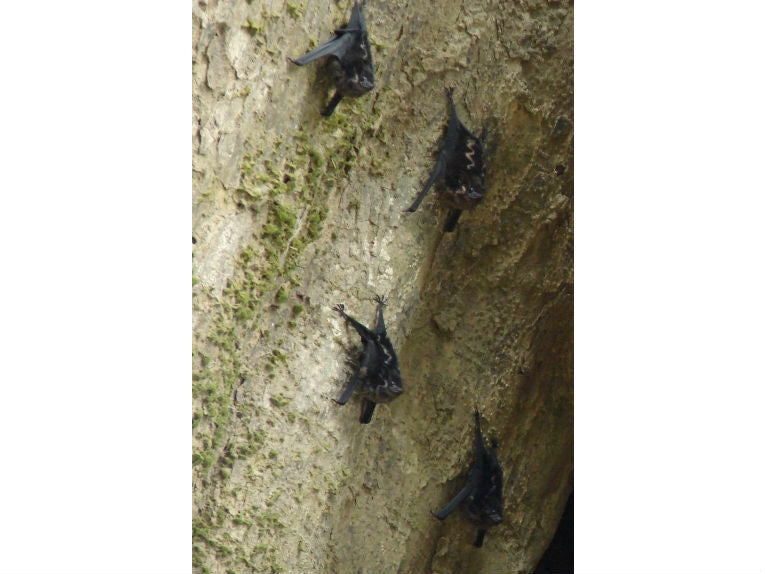The echolocation of both whales and bats is contrived to help them communicate with each other as well as orientation and predation on organisms in air or water. Sociability demands sex, age and size, reproductive status, group affiliation as well as ID in order for animals to communicate effectively. How the receiver responds to the acoustic data, along with other members of the same species, is critical. The information can be separated into "personal" and "social."
The greater sac-winged bat (Saccopteryx bilineata), in a special investigation, allowed its closest social secrets to be observed. From the German University of Ulm, Mirjam Knőrnschild, Kirsten Jung and their colleagues produced a paper today that opens wide the dialogues conducted by bats, and especially their eavesdropping friends!
This neotropical species is highly social, polygynous and great lifelong fidelity to their colonies. They end up with one male in a small roosting area with from 2-8 females and many non-harem (ie. single) males. Strangely, the female mates with a male in December, who may not be her resident harem male. Songs are used by the males to woo the mate, almost like those of birds, along with territorial "aggressive vocalisation", exactly like those of birds.
As the harem males are the first to arrive at the day-roost at dawn, they were compared at the day-roost to see if any individual vocal signatures were used. With this bat a complicated repertoire matches its social structure, so it was hoped to match aggressive vocals to approaching males and more welcoming sounds for the ladies. Costa Rica was the site for the experiment, in three separate locations.
The bats (a final number of perfect recordings from 27 were obtained) were all recorded individually. First established was the similar approach made to the roost by both sexes, and that no scent could have been wafted to the roost area by the flight's wake. A 5 metre distance from the colony was required before a call qualified for the experiments while vocal responses had to be directed at the approaching bat and not others.
All males called to females in the same way, using courtship songs, detecting the gender of the animal from its style of Hyperlink Codeecholocating. To males however the repertoire used consisted of aggressive vocalisation, territorial song and some "barks."
ID and sex were part of the signature calls, but the prime winners in these situations were the non-harem males. Being able to distinguish gender helped them to target females and try and attract them to their location. You can easily work out why the harem males made sure to return first.
The full paper, Bat echolocation calls facilitate social communication, has been published today in the Proceedings of the Royal Society B: Biological Sciences.










